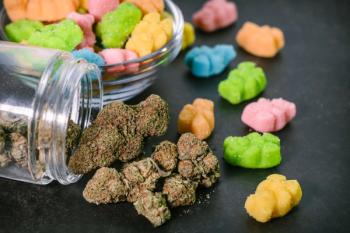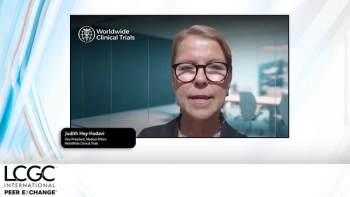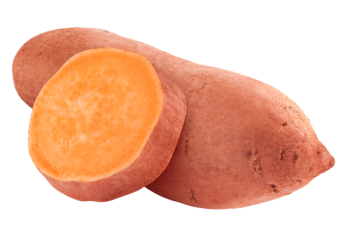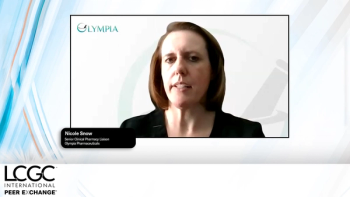
|Articles|June 12, 2008
LCGC Europe Readership Survey 2008
LCGC Europe reader survey 08
Advertisement
Q1
To begin, please tell us which chromatography publications you read on a regular basis?
LCGC Europe
International Laboratory
Lab Plus International
International Labmate
International Lab News
GIT Laboratory Journal
Chromatography Today
Other
Please specify
Q2
From the following select group, please choose the single source that best reflects each of the following features:
Provides global coverage
Is reader-friendly
Contains unique content & interviews with leading experts
Offers an enewsletter with exclusive content
Q3
What work-related information do you have the most difficulty finding or accessing?
Q4
What are the three most important issues facing your work today?
Q5
Please indicate which sections you mainly read in each issue of
Column Watch
Coupling Matters
GC Connections
LC Troubleshooting
MS in Practice
Practical Data Handling
Questions of Quality
Sample Preparation Perspectives
Application Notes
Event News
Literature
Meeting Previews
News
New Technologies
Products
Q6
Please indicate the extent to which you agree with each of the following statements:
LCGC Europe stays on top of industry issues
LCGC Europe is an authoritative source that keeps me abreast of important developments
LCGC Europe helps me decide what products to buy/use
I like the current magazine size of LCGC Europe
I find the layout/design of LCGC Europe easy to read and engaging
The cover of LCGC Europe attracts my attention
Q7
Please rate the amount of coverage you want in
Industry news
Leading expert opinion
Book reviews
Career information
Laboratory management
Instrument reviews
Interviews with leading separation scientists
Events
Q8
In addition to yourself, please indicate the average number of people who read your copy of
0
1-2
3-4
5-6
7-10
More than 10
Q9
What do you do with your issue of
Save for reference
Clip articles of interest
Place in a public place
Clip ads of interest
Pass along to someone else
Send to library
None of the above
Q10
What do you consider
Q11
In the last 12 months, what actions have you taken as a result of reading articles in
Applied information to practice
Contacted/visited website of companies mentioned in article
Contacted the magazine
Discussed article with others/filed for future reference
Visited LCGC Europe's website
Attended a conference
No actions taken
Recommended LCGC Europe to a colleague
Q12
In the last 12 months, what actions have you taken as a result of seeing advertisements in
Visited a company?s website/sent an e-mail to a company
Contacted dealer/supplier/representative/company
Purchased product or service
Recommended/discussed product/service
Filed advertisement for future reference
Attended a conference
No actions taken
Q13
Which products in these categories are you planning or are likely to purchase over the next 2 years?
(Please specify which product(s))
Restorative Dentistry
GC instruments/consumables
General scientific equipment
Data handling/ calibrant systems
Reagents/solvents/standards
Sample preparation products
SFC instruments/consumables
Software
Mass spectrometers
Other
Please list product details
Q14
How useful do you find the advertising in
Essential
Very Useful
Useful
Not Useful
Q15
Without referring to the magazine, list up to three companies that advertised in your most recent issue of
Q16
Which of the following have you searched for or accessed online in the past month?
(Please select all that apply)
www.separationsnow.com
www.chromedia.org
www.laboratorytalk.com
www.chemie.de
www.labplusinterational.com
www.pharmalive.com
www.internationallaboratory.com
www.gitverlag.com
www.biotech-online.com
Other, please list
Q17
How often do you use the Internet for work purposes?
Daily
2-3 times/week
Weekly
Rarely
Never
Q18
How many hours each week do you spend on the Internet for professional purposes?
Less than 1
1-5
6-10
11-20
Over 20
Q19
Which of the following have you searched for or accessed online in the past month?
Industry & product news
Research news
Technical articles
Regular columns
Events
Interviews
Webinars
Discussion forums
Podcasts
Other, please specify
Q20
What search terms related to your field do you use most often online?
Q21
From the following group of websites, please select the single site that you consider most relevant to your needs:
www.separationsnow.com
www.laboratorytalk.com
www.chemie.de
www.labplusinterational.com
www.pharmalive.com
www.internationallaboratory.com
www.gitverlag.com
www.biotech-online.com
www.chromedia.org
Other
Please specify
Q22
What inspires you to keep visiting a website?
Breaking news
Features
Interviews
Discussion forums
Podcasts
Blogs
Surveys
Career Information
Event highlights
Webinars
Training
Product information
Other, please specify
Q23
In the last two years, how has your usage of the
Increased dramatically
Increased somewhat
Stayed the same
Decreased somewhat
Decreased dramatically
I have never visited the site
Q24
Which of the following media products/services do you use?
(Please select all that apply)
Blogs
Information sent directly to your PDA
Email alerts
Webinars
Online videos
Podcasts
Q25
How often yould you like to receive eNewsletters?
Daily
Weekly
Biweekly
Monthly
Quarterly
Q26
Would a weekly, concise, carefully targeted
Yes
No
If yes please provide your email address
Q27
What content within that newsletter would be of most use/interest to you?
News
Troubleshooting tips
Events
Product Information
Latest research
Surveys
Application notes
Interview highlights
Technological updates
Other, please specify
Q28
From the following group of eNewsletters, please select the single newsletter that you consider most relevant to your needs.
LCGC Europe UPDATE eNewsletter
Separations Now
Shimadzu eNewsletter
Hichrom eNewsletter
Perkin Elmer eNewsletter
Varian eNewsletter
Agilent eNewsletter
Waters eNewsletter
ANALYTIK NewsFlash
VWR eNewsletter
Applied Biosystems eNewsletter
Sigma Aldrich eNewsletter
Dionex eNewsletter
Polymer Labs eNewsletter
Q29
Your gender
Male
Female
Q30
Please indicate your age range:
Under 30
30-34
35-39
40-44
45-49
50-54
55-59
60-64
65+
Q31
Which country in Europe are you based?
Q32
In which type of organisation do you work?
Private industry
Government
Hospital/Medical Centre
University/College
Independent Laboratory
Other
Q33
What is your primary field of work:
Pharmaceuticals
Food/Beverage
Medical/Biological/Clinical
Chemicals
Water
Agriculture
Biotechnology
Environmental
Instrumentation Design
Plastics/Polymers
Other, please specify
Q34
What is your job function?
R&D
QA/QC
Analyst
Technical Services
Marketing/Sales
Teaching
Laboratory Manager
Corporate Manager
Consultant
Other, Please specify
Q35
Please indicate your role in the purchase of products and services in your organization:
I authorize
I specify
I recommend
No involvement
Q36
How much has your company invested in R&D in the past 12 months?
<1000
1000-5000
5000-10000
10,000-50,000
50,000-100,000
100,000-500,000
Greater than 500,000
Q37
Are there any other comments you would like to make about
Q38
Name
Q39
Company
Q40
Telephone
Q41
Email
Q42
Address
Newsletter
Join the global community of analytical scientists who trust LCGC for insights on the latest techniques, trends, and expert solutions in chromatography.
Advertisement
Advertisement
Advertisement
Trending on LCGC International
1
Toward Safer Diabetes Devices: GC–MS Detection of Allergens in Sensors, Pumps, and Infusion Sets
2
Advancing RNA-Based Therapeutics: IQ Consortium Experts on Optimizing Chromatographic Bioanalysis
3
Sustainability, Leadership, and Strategic Evolution at Knauer
4
Navigating Adverse Reactions in GLP-1 Treatment
5





